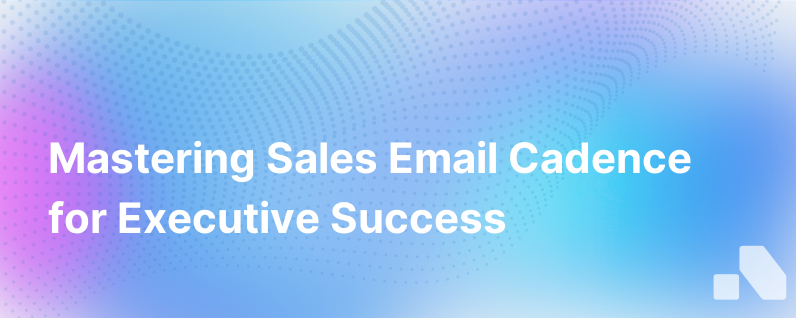
Email marketing remains an invaluable tool for B2B sales success, providing a direct line of communication to prospects and the ability to nurture leads effectively. Crafting the perfect sales email cadence can be the difference between a deal won and an opportunity missed.
Understanding Sales Email Cadence
Sales email cadence is the rhythm at which sales emails are sent to potential prospects. It's a structured approach to determining the timing, frequency, and content of emails during the sales process. A well-designed email cadence takes into account the various stages of the buyer's journey, respecting prospects' time while ensuring consistent touchpoints to keep your solution top-of-mind.
Why is Sales Email Cadence Important?
An effective sales email cadence automates the follow-up process, ensuring no lead falls through the cracks. It keeps the conversation going without being intrusive, helping maintain a balance between persistence and respect for the prospect's decision-making process.
The cadence builds a sequence of touchpoints that educates, informs, and ultimately persuades the prospect to take the desired action, be it booking a meeting, signing up for a demo, or making a purchase.
Crafting the Perfect Sales Email Cadence
To craft an email cadence with impact, follow these guidelines:
1. Define Your Purpose and Goals
Begin by outlining what you aim to achieve with your email cadence. Are you looking to secure a meeting, or are you nurturing a lead? Having a clear goal helps tailor the content and flow of your emails to drive the desired outcome.
2. Know Your Audience
Understand your prospect's profile, their industry pain points, and personal goals. Segment your audience to ensure relevance; a one-size-fits-all approach seldom y
3. Content is King
Each email should offer value. Whether it's a whitepaper, case study, or a simple tip, make sure you're providing something meaningful. Avoid filler content that could turn prospects off and lead to unsubscribes.
4. Timing and Frequency
There's no universal rule for email timing and frequency, as this can vary based on your industry and the type of prospect you're targeting. However, a study by TOPO found that an effective B2B email cadence should have between 5-7 touchpoints over a course of 2-4 weeks. Start with this as a benchmark and adjust based on response rates and feedback.
5. Personalization
Inject personal touches such as the prospect's name, company, or a recent achievement. This helps build a connection and shows that you've done your research, rather than sending a blanket email.
6. Varying the Message
While consistency is key, avoid sending the same message over and over. Each email should have a fresh angle, pushing the conversation forward and building upon the previous messages.
7. Call-To-Action (CTA)
Every email should end with a clear CTA, which guides the prospect on what to do next. Whether it's replying, scheduling a call, or reading a blog post, make sure it's direct and easy to follow.
8. A/B Testing
Test different subject lines, content, and sending times to see what resonates best with your audience. Use this data to continuously refine your approach.
9. Track and Measure Results
Use tracking tools to measure open rates, click-through rates, and responses to your emails. These metrics will help you to understand how well your cadence is performing and where it may need tweaking.
Sample Email Cadence Structure
Consider the following framework for a standard B2B sales email cadence spread across a few weeks:
Email 1: Introduction
Send immediately after initial contact. Introduce yourself and provide a brief overview of the value you can offer.
Email 2: Offer Value
Send 2-3 days after Email 1. Follow up with a piece of valuable content related to the prospect's industry or a solution to a problem they might be facing.
Email 3: Social Proof
Send 5-7 days after Email 2. Present a case study or testimonial demonstrating the success others have found with your service or product.
Email 4: Personalized Proposition
Send 7-10 days after Email 3. Offer a suggestion tailored to the prospect's business or a personal observation from your research.
Email 5: Soft Break-Up
Send 12-14 days after Email 4. Politely indicate that this will be your last attempt to reach them for now but leave the door open for future communication.
Email 6: The Check-Back
Send a month after Email 5. Reach out with fresh value or news and a gentle nudge to see if circumstances have changed.
Conclusion
Email cadence, when executed well, streamlines the sales process, builds meaningful prospect relationships, and drives conversions. Balancing persistence with patience is key, as is providing tailored value at each touchpoint.
For any B2B startup looking to implement a sales email cadence, tools like Aomni can be the difference between sending emails and sending emails that convert. With Aomni’s sophisticated platform, you can get real-time insights and personalized content suggestions for each prospect, making your sales email cadence not just a sequence of emails, but a strategic tool that drives results.